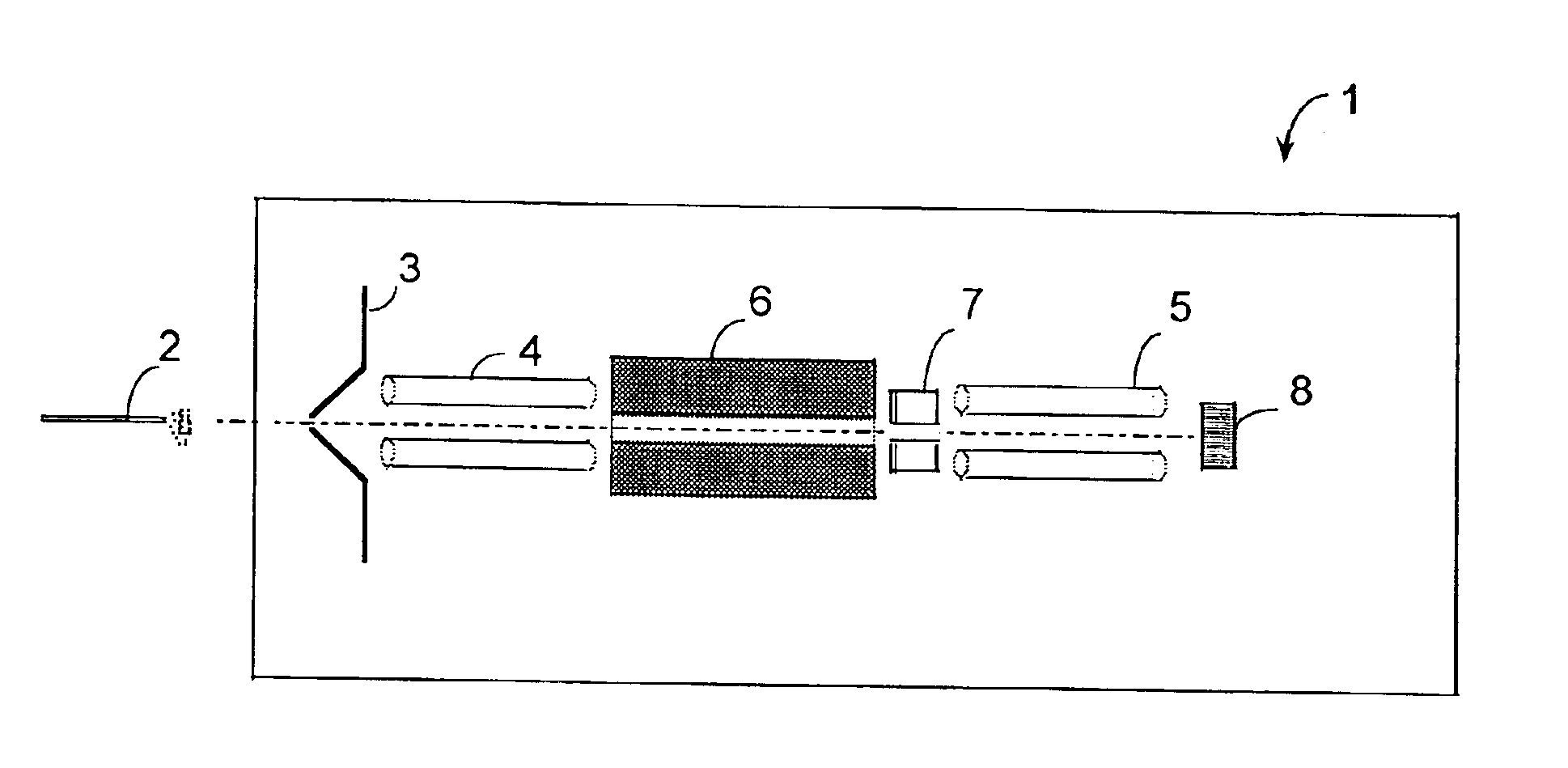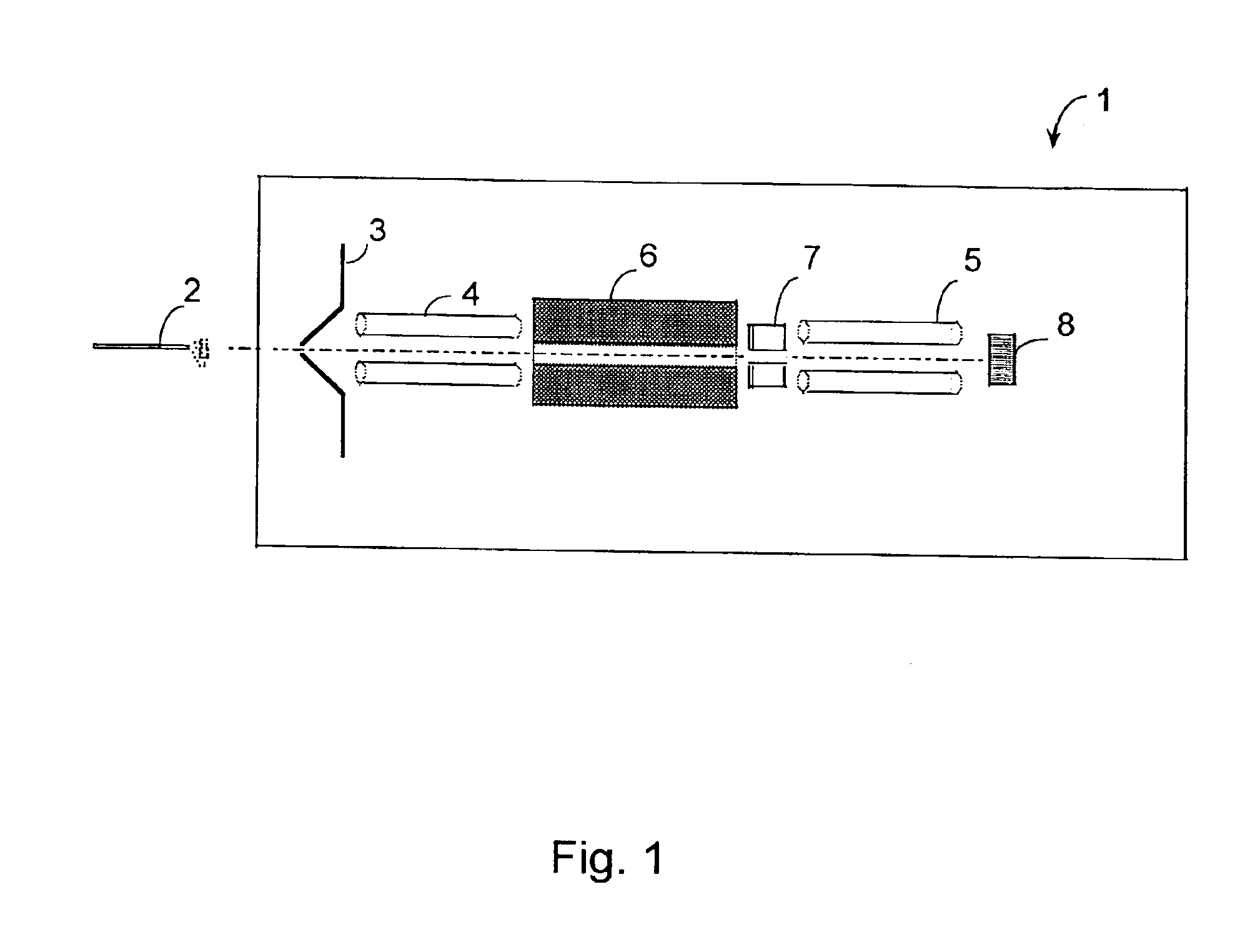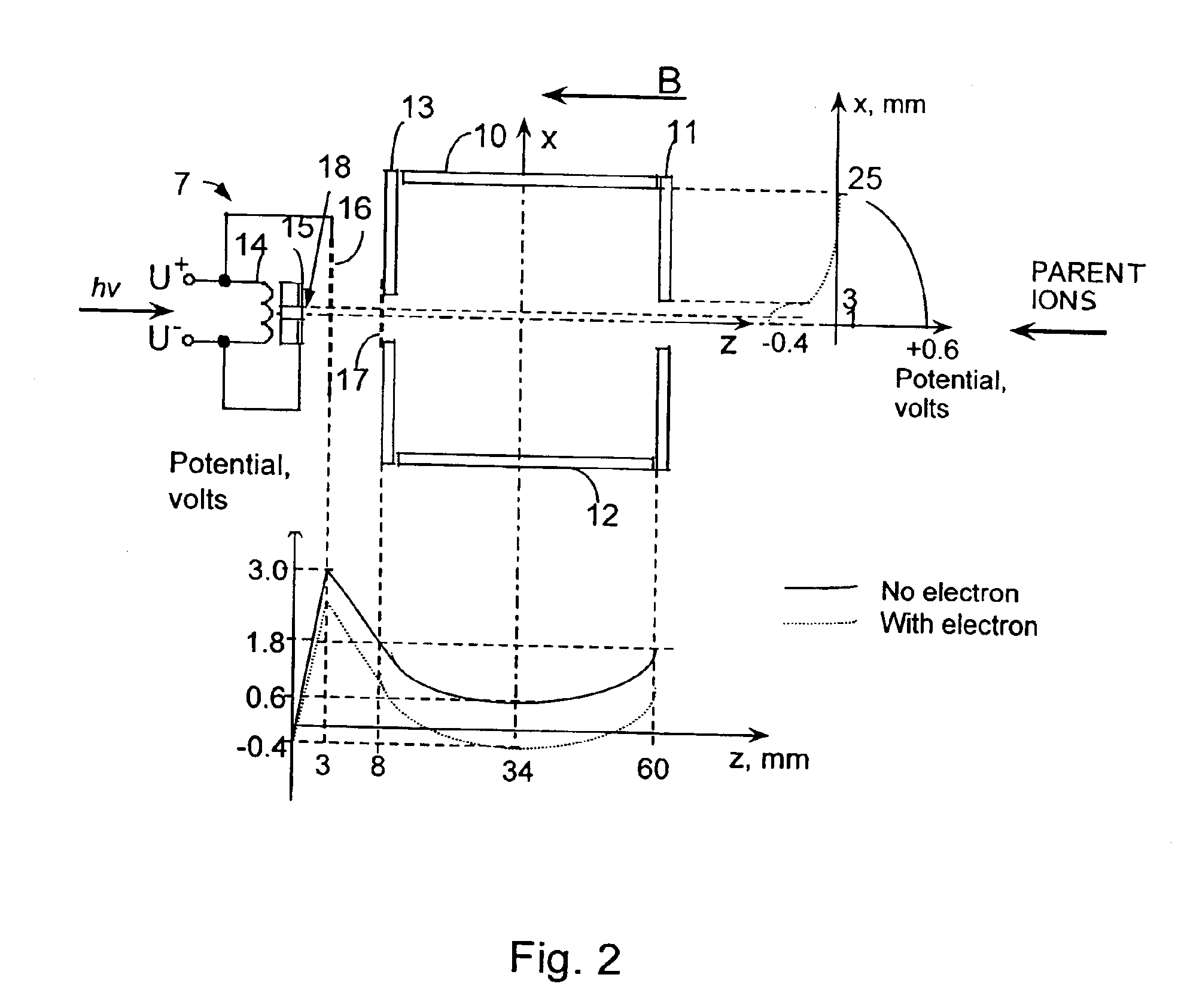Mass spectrometry methods using electron capture by ions
a mass spectrometry and electron capture technology, applied in the field of ion fragmentation techniques, can solve the problems of erroneous structure assignment, loss of information on location, and collisional and infrared dissociation techniques have serious drawbacks, and achieve the effect of effective electron capture dissociation
- Summary
- Abstract
- Description
- Claims
- Application Information
AI Technical Summary
Benefits of technology
Problems solved by technology
Method used
Image
Examples
example 1
[0062]A schematic drawing of the instrumental arrangement used for an experimental demonstration of the present invention is shown in FIG. 5. The instrumental configuration comprises an Ultima ion cyclotron resonance mass spectrometer (IonSpec, Irvine, Calif., USA) that has been modified in such a way that the standard filament-based electron source has been replaced by an indirectly heated dispenser cathode with an emitting surface of 1.6 mm2. The cathode was obtained from PO Horizont, Moscow, Russia. The operating potentials are U+=+5 V, U−=−1 V during the electron irradiation event, and U+=+15 V, U−=+9 V during all other events. The current through the cathode is 0.6 A in all cases. The emitting surface is electrically connected with U−. In front of the emitting surface, a 80% transparent copper mesh grid is installed and connected to U+. The same type of grid is installed on the trapping plate of the rectangular ion cyclotron resonance cell. The distance between the two grids is...
example 2
ECD by “hot” (3-13 eV) electrons—HECD
[0065]The following experiment illustrates the features of the above-described HECD reaction. The experiment was performed with a Fourier transform Mass spectrometer as described above. Electrospray-produced dications of the synthetic decapeptide SDREYPLLIR (SPR, signal recognition particle from Saccharomyces cerevisiae) were irradiated for 250 ms by 0-13 eV electrons. Two maxima were observed in the cross-section plot for N—Cα bond cleavage, one at about 0 eV and another at about 7 eV, with full width at half maximum equal to 1 eV and 6 eV respectively. The first region of the effective N—Cα bond cleavage corresponds to the ‘normal ECD’ regime, as described above. The second maximum, we postulate is due to the novel reaction of hot electron capture dissociation (HECD). That the observed N—Cα bond cleavages indeed involved electron capture is supported by the observation that even longer (400 ms) irradiation of monocations produced only C—N cleav...
PUM
 Login to View More
Login to View More Abstract
Description
Claims
Application Information
 Login to View More
Login to View More - R&D
- Intellectual Property
- Life Sciences
- Materials
- Tech Scout
- Unparalleled Data Quality
- Higher Quality Content
- 60% Fewer Hallucinations
Browse by: Latest US Patents, China's latest patents, Technical Efficacy Thesaurus, Application Domain, Technology Topic, Popular Technical Reports.
© 2025 PatSnap. All rights reserved.Legal|Privacy policy|Modern Slavery Act Transparency Statement|Sitemap|About US| Contact US: help@patsnap.com



